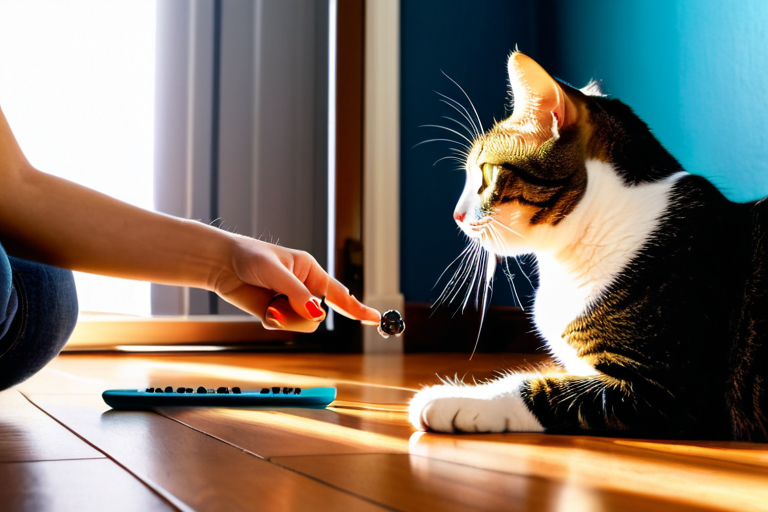Complete Guide for First-Time Cat Owners: From Adoption to Care
"A cat has absolute emotional honesty: human beings, for one reason or another, may hide their feelings, but a cat does not." - Ernest Hemingway
Bringing a cat into your home is one of the most rewarding experiences you'll ever have. These graceful, independent creatures quickly become cherished family members, but proper preparation and ongoing care are essential for their wellbeing. This comprehensive guide covers everything you need to know as a first-time cat owner.
Pre-Adoption Preparation: Setting Up Your Home

Before your new feline friend arrives, proper preparation is crucial. According to the ASPCA, a well-prepared home significantly reduces stress for both you and your cat during the transition period.
Essential Supplies Checklist
- Food and Water Bowls: Choose stainless steel or ceramic bowls that are easy to clean
- High-Quality Cat Food: Research age-appropriate nutrition from reputable brands
- Litter Box and Litter: One box per cat plus one extra is the golden rule
- Scratching Posts: Multiple scratching surfaces in different locations
- Comfortable Bedding: Soft, washable beds in quiet areas
- Safe Toys: Interactive toys for mental stimulation
- Carrier: Sturdy, well-ventilated carrier for vet visits
- Grooming Supplies: Brush, nail clippers, and cat-safe shampoo
Cat-Proofing Your Home
The Humane Society recommends these safety measures:
- Secure windows and balconies with screens
- Remove toxic plants like lilies, poinsettias, and philodendrons
- Keep electrical cords out of reach or use cord protectors
- Store chemicals, medications, and small objects safely
- Create safe hiding spots and high perches
The Adoption Process: Choosing Your Companion
When selecting your cat, consider factors beyond appearance. Age, temperament, and energy level should match your lifestyle. Kittens require more time and training, while adult cats often have established personalities.
Questions to Ask Before Adoption
- What is the cat's medical history and vaccination status?
- Has the cat been spayed/neutered?
- What is their personality like with people and other pets?
- Are there any known behavioral issues?
- What type of food and litter are they accustomed to?
Bringing Your Cat Home: The First 48 Hours

The initial adjustment period sets the tone for your relationship. Veterinary behaviorist Dr. Sarah Ellis emphasizes the importance of patience during this critical phase.
Creating a Safe Space
Designate a quiet room with all essential supplies where your cat can acclimate gradually. This "base camp" approach, recommended by cat behavior experts, helps reduce overwhelming stress.
Introduction Timeline
- Day 1: Allow exploration of the safe room only
- Day 2-3: Gradually introduce other family members
- Day 4-7: Supervised exploration of additional rooms
- Week 2+: Full home access with continued supervision
Nutrition and Feeding Guidelines
Proper nutrition is fundamental to your cat's health. The Association of American Feed Control Officials (AAFCO) provides standards for complete and balanced pet foods.
Choosing the Right Food
- Age-Appropriate: Kitten, adult, or senior formulations
- Wet vs. Dry: Many veterinarians recommend a combination
- Protein Quality: Look for named meat sources as primary ingredients
- Avoid Fillers: Minimize corn, wheat, and soy content
Feeding Schedule and Portions
Consult your veterinarian for specific recommendations based on your cat's age, weight, and activity level. Most cats do well with 2-3 measured meals daily rather than free-feeding.
Healthcare and Veterinary Visits

Regular veterinary care is non-negotiable for maintaining your cat's health. The American Veterinary Medical Association outlines essential healthcare protocols.
Essential Vaccinations
- Core Vaccines: FVRCP (feline viral rhinotracheitis, calicivirus, panleukopenia) and rabies
- Non-Core Vaccines: Based on lifestyle risk factors
- Vaccination Schedule: Follow your veterinarian's recommended timeline
Preventive Care Schedule
- Annual Exams: Comprehensive physical check-ups
- Dental Care: Regular teeth cleaning and monitoring
- Parasite Prevention: Monthly flea, tick, and heartworm prevention
- Blood Work: Baseline and annual screening tests
Grooming and Hygiene
Regular grooming maintains your cat's coat health and provides bonding opportunities. The frequency and type of grooming depend on your cat's breed and coat length.
Grooming Routine Components
- Brushing: Daily for long-haired breeds, weekly for short-haired
- Nail Trimming: Every 2-3 weeks with cat-specific clippers
- Ear Cleaning: Weekly inspection and cleaning as needed
- Dental Care: Daily brushing with cat-safe toothpaste
- Bathing: Only when necessary with feline-formulated shampoo
Behavior and Training

Understanding feline behavior is key to a harmonious relationship. Cats communicate through body language, vocalizations, and behavior patterns.
Common Behavioral Issues and Solutions
- Litter Box Problems: Rule out medical issues first, then address environmental factors
- Scratching Furniture: Provide attractive alternatives and use deterrents
- Aggression: Identify triggers and consult a behavior specialist
- Excessive Vocalization: Ensure needs are met and provide enrichment
Positive Reinforcement Training
Use treats, praise, and play to reinforce desired behaviors. Cats respond well to clicker training and short, frequent sessions.
Environmental Enrichment
A stimulating environment prevents boredom and behavioral problems. The International Cat Care organization emphasizes the importance of environmental complexity.
Enrichment Strategies
- Vertical Space: Cat trees, shelves, and window perches
- Interactive Toys: Puzzle feeders and wand toys
- Hiding Places: Cardboard boxes and covered beds
- Visual Stimulation: Bird feeders outside windows
- Rotation System: Regularly rotate toys to maintain novelty
Emergency Preparedness
Being prepared for emergencies can save your cat's life. Keep important information and supplies readily accessible.
Emergency Kit Essentials
- Veterinary contact information and medical records
- 3-day supply of food, water, and medications
- First aid supplies and pet first aid guide
- Recent photos of your cat for identification
- Carrier, leash, and harness
- Comfort items like familiar bedding
Senior Cat Care

As cats age, their needs change significantly. Cats are typically considered seniors at 7-10 years old, requiring adjusted care and more frequent veterinary monitoring.
Senior-Specific Considerations
- More Frequent Vet Visits: Semi-annual examinations recommended
- Diet Modifications: Senior-formulated foods with joint support
- Mobility Accommodations: Ramps, lower litter boxes, and orthopedic beds
- Increased Monitoring: Watch for changes in behavior, appetite, and litter box habits
- Dental Health: Regular dental check-ups become increasingly important
Building a Lasting Bond
The relationship with your cat evolves over time through consistent, positive interactions. Respect their boundaries while providing affection and care.
Bonding Activities
- Regular Play Sessions: Daily interactive play strengthens your connection
- Gentle Grooming: Brushing sessions provide physical contact and care
- Quiet Time Together: Simply being present in the same space
- Training Exercises: Mental stimulation builds trust and communication
- Respect Their Space: Allow them to initiate contact when comfortable
Key Takeaways for New Cat Owners
- Preparation before adoption reduces stress for everyone involved
- Consistent routines provide security and predictability
- Regular veterinary care prevents serious health issues
- Environmental enrichment is essential for mental wellbeing
- Patience and understanding build strong, lasting bonds
Remember that every cat is an individual with unique preferences and personality traits. What works for one cat may not work for another. The journey of cat ownership is one of continuous learning and adaptation. With proper care, attention, and love, your feline companion will reward you with years of companionship and joy.
This guide incorporates recommendations from leading animal welfare organizations and veterinary experts. Always consult with your veterinarian for personalized advice regarding your cat's specific needs.